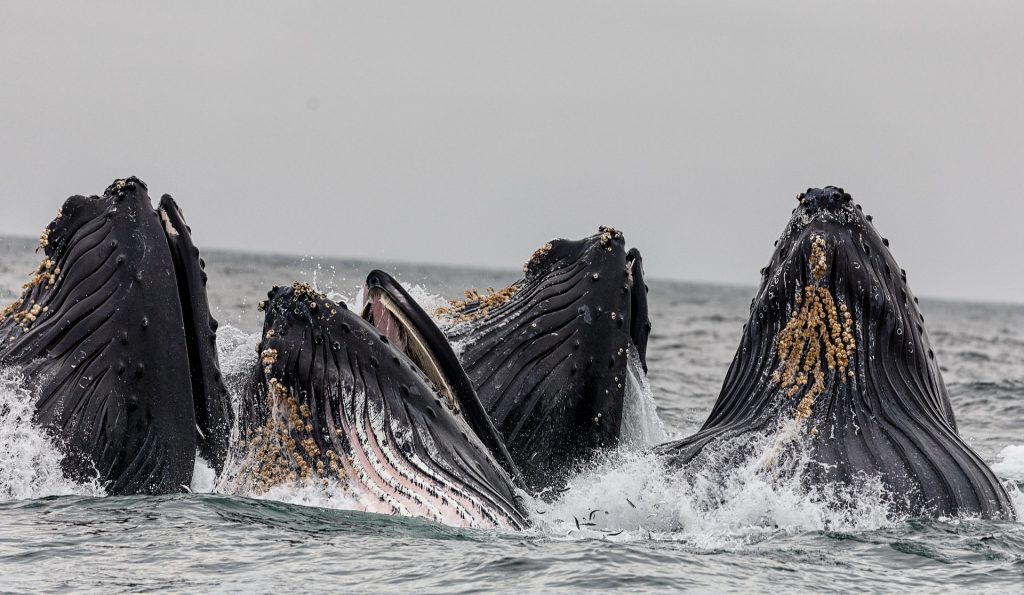Diet & Feeding Habits of Whales
Tuesday, October 27th, 2020 | Blog

Like all other animals, marine mammals must work for a living, hunting or foraging for the food they need to sustain them, and they will often be found in proximity to their preferred food sources. Thus, knowledge of their diet and feeding patterns plays an important role in locating them and understanding their observed behaviour.
As we might expect, diet and feeding behaviour among cetacean species varies widely. Toothed whales or odontocetes are classic hunters, harrying and pursuing their prey through the waters of the world’s seas and oceans. Baleen whales are effectively grazers, feeding on myriad small organisms strained out of the great quantities of water that pass over their baleen plates. Some cetacean species are primarily nocturnal feeders, taking advantage of the nightly migration of organisms from the lower ocean layers toward the surface. Others feed during daylight hours, or by day as well as by night. Some find their prey at or near the surface; others, like sperm whales, must dive deep.
The cetacean menu includes cuttlefish, fish, plankton, squid, shrimp and in some cases turtles and fellow cetaceans. The choice of food depends on the animals size, feeding adaptations, food availability and many other factors. The great whales feed on shoals of plankton and small bait fish, while dolphins tend to hunt and consume individual fish or squid
Image ©Vivek Kumar, Unsplash
Text from Howard Martenstyn, Out of the Blue